With the advent of the informational era, and lately, usage of Artificial Intelligence to automate and make some jobs obsolete, new professions appear and others evolve, making people be on a constant learning spree to keep up with the industries' standards.
Along with that, globalization and technological advances blur the boundaries between physical locations and make it possible to hire people from all over the world. This global marketplace puts an additional strain on people, as they have to compete for a job not only with others within a city or state but with millions of people from other countries as well.
On the other hand, there is a shortage of professional workers on a global level, so the good news is that if you are an expert in your field, you will have no trouble finding a great, well-paid job.
But how does one becomes an expert, a master of their craft? It is not an easy question, and to answer it, let’s travel in time.
The Medieval Guild
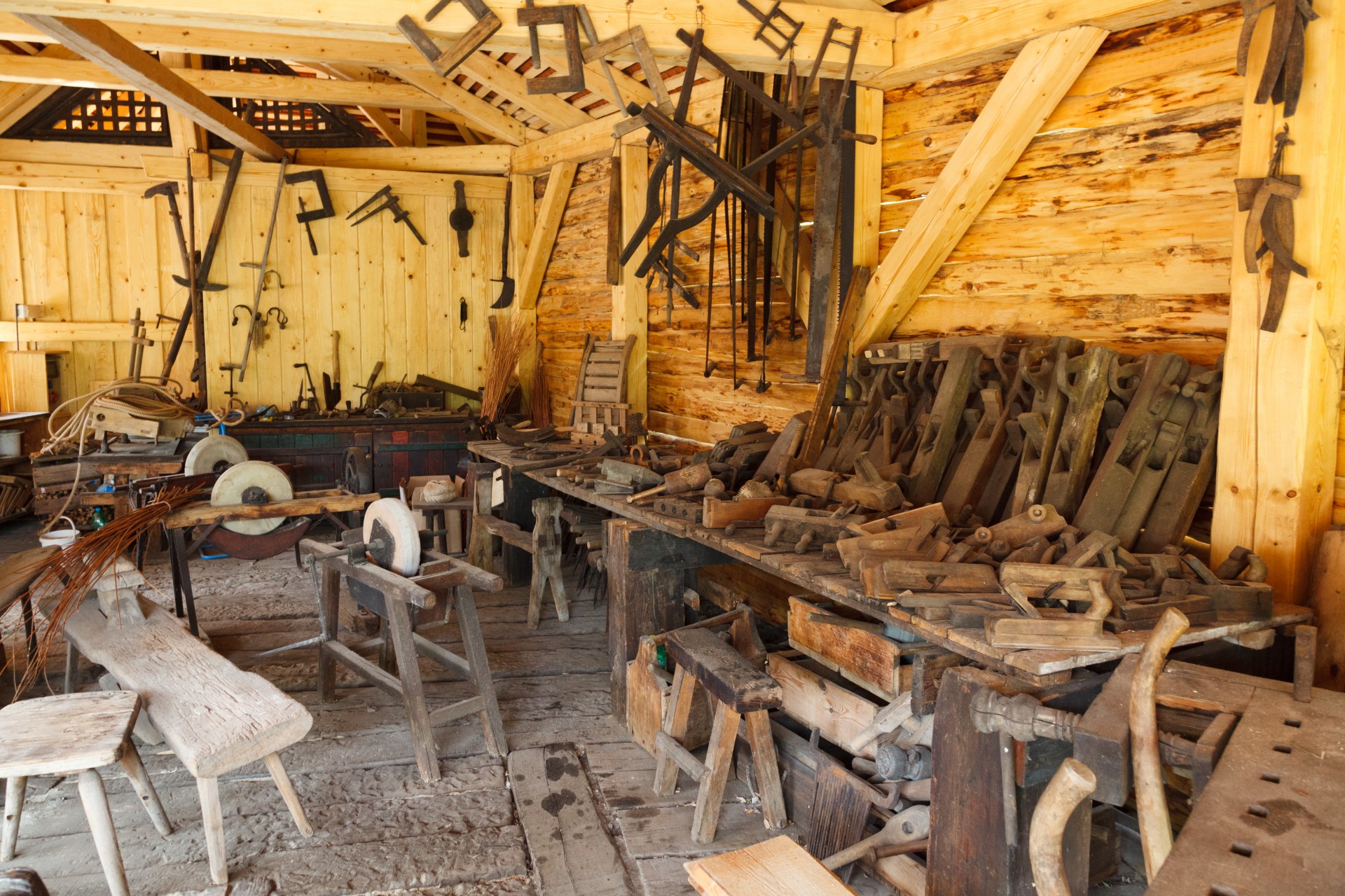
Source: publicdomainpictures.net
In the Middle Ages, a guild was an association of artisans or merchants who oversee the practice of their craft/trade in a particular area.1 Usually, the founders of these guilds were free independent master craftsmen.
To keep with the demand for goods and services that the guilds were providing to towns, master artisans created a system of training a new generation of practitioners of a trade or profession with on-the-job training and often some accompanying study (classroom work and reading) called Apprenticeship.2
Apprentices usually were kids/teens that had to learn for many years (which varied depending on the craft, between 2-10 years) the skills and techniques of both hand and mind. In the beginning, they were observing how the master craftsman works and taking on simple tasks. Then upon gaining a good understanding and becoming skillful in basic tasks, they took on more complex tasks and gradually learned the secrets of the trade. The hidden “mysteries” of the profession were among the last things the Master taught them.
After their Apprenticeship, the young professionals became Journeymen. A journeyman was a competent employee, authorized to work in the field in which they have completed the Apprenticeship, but they couldn’t work for themselves yet. To become a Master, a journeyman had to improve their skills even further (usually for several more years) and then submit a master piece of work to a guild for evaluation. Then, upon successful evaluation of their work, they were considered Masters.
Finally, a Master could work for themselves and take on apprentices, whom they were teaching the art of their craft.
Fast Forward To Today
Nowadays, things look a bit differently. On one hand, we have a formal education system that hasn’t changed much in the last century. On the other hand, we have companies that spend $1,252 per employee per year on average on training and development initiatives.3 And the chances are high that this number will only increase since the Institute for the Future estimated that around 85% of the jobs that today’s learners will be doing in 2030 haven’t been invented yet.4 Another notable difference between the two is that the current education approach discriminates children in favor of adults.
But there is a third, immense, dimension—the internet with its myriad of resources on “How to learn [something] in 7 days," or “5 ways to achieve [something]" and many other fancy titles that promise you to magically solve your problems or teach you a new skill.
So, with such an abundance of information, a constant evolution of professions, and an ever-increasing demand of highly skilled workers, how does one become a Master of their trade?
After researching this subject, I want to present to you The Pyramid of Mastery.
The Pyramid Of Mastery
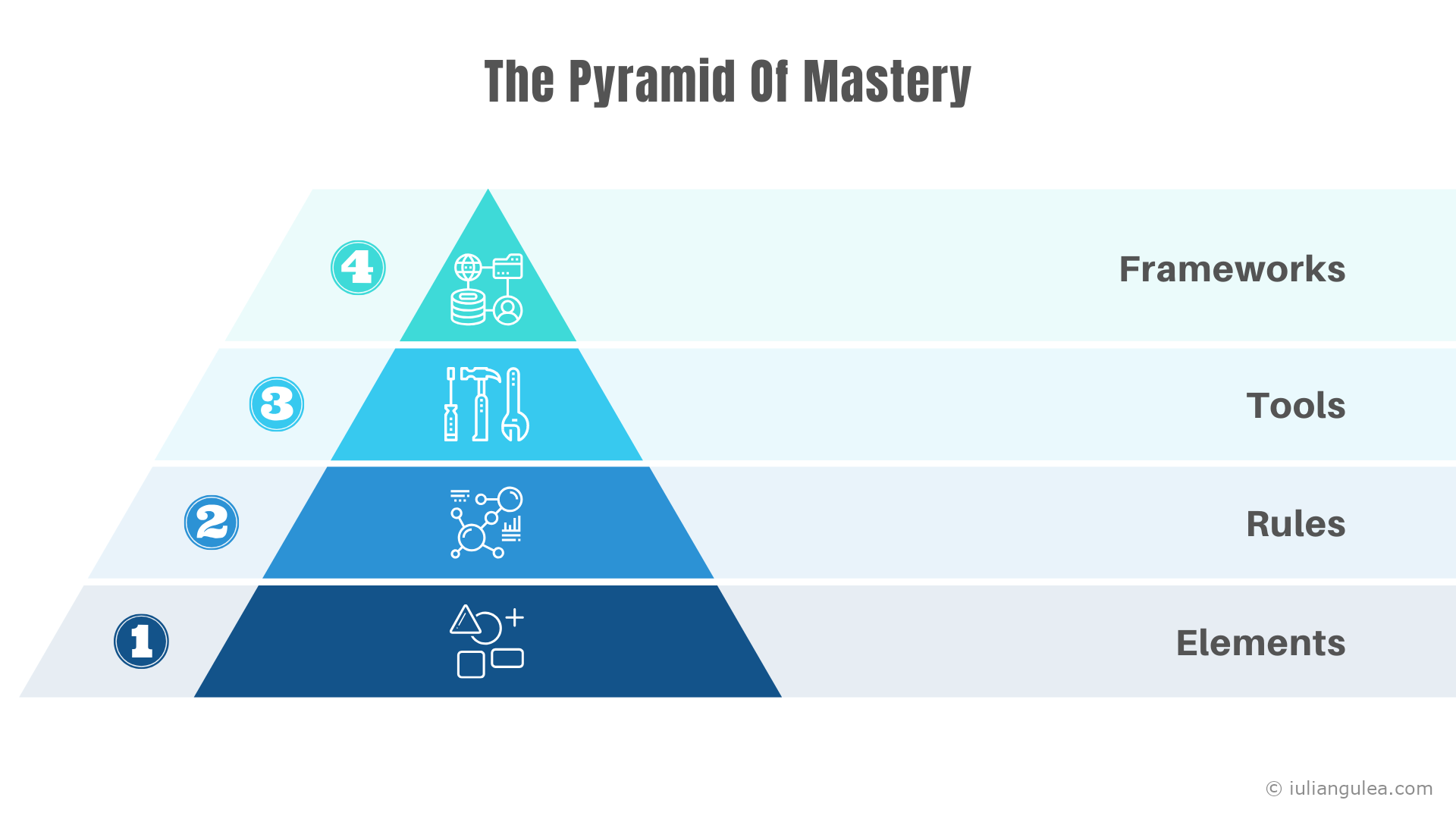
The Pyramid describes the things you need to grok and have a thorough understanding of to become an expert in the field. It has four layers, each depending on the previous one.
Let’s define what each of those levels represents. And to make the explanation more engaging, I’ll be making analogies with the domain of cooking.
The Elements
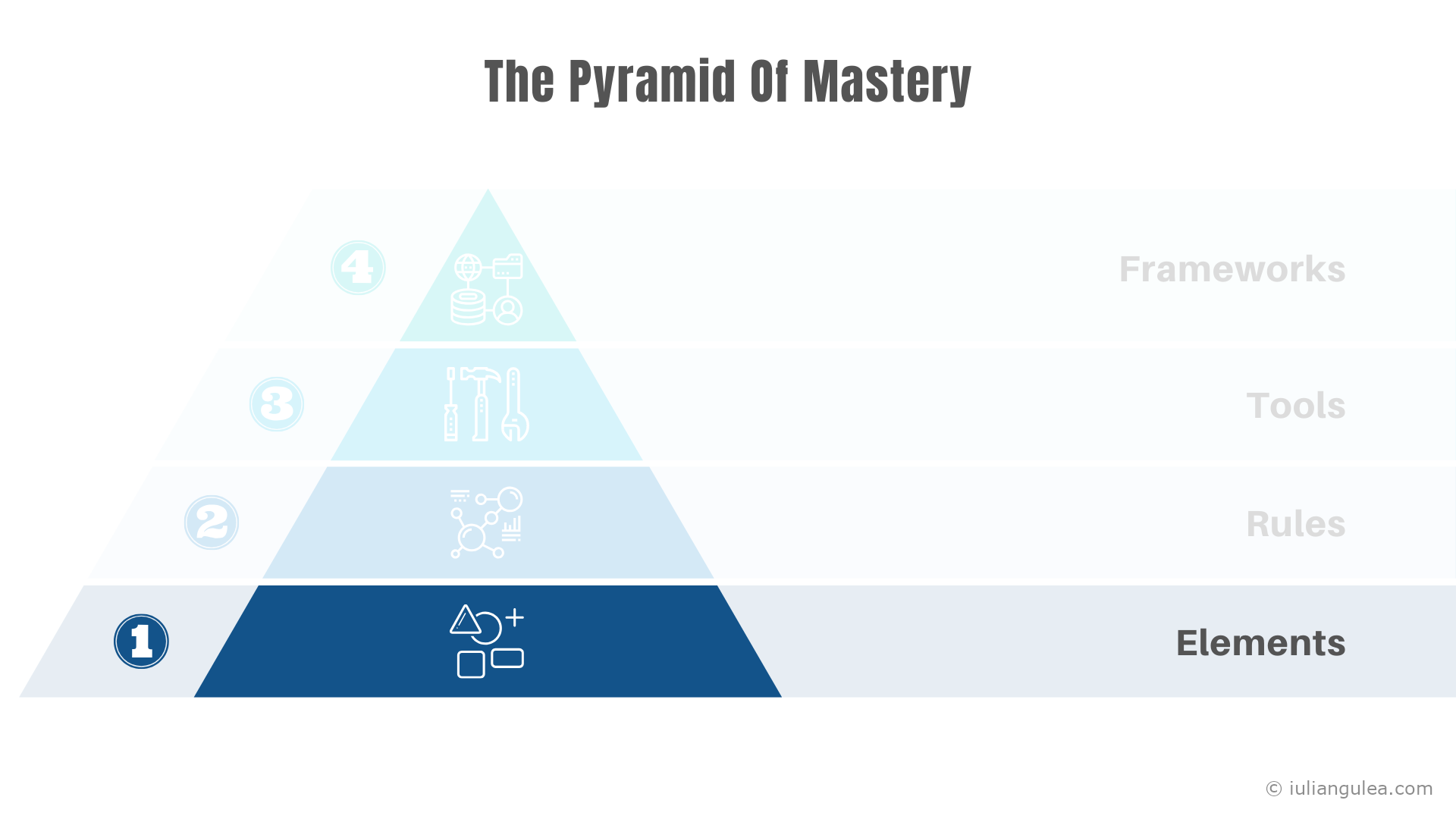
The Elements is the first and the most basic layer that describes the building blocks of the domain you’re looking to master. This layer serves as the foundation of every bit of knowledge you are going to learn, every skill you are going to master, and every insight you will discover.
The Elements are the basic, fundamental concepts that define a domain. They are like lego pieces—if you don’t possess many different types of parts, you won’t be able to construct something complex.
In cooking, some Elements are:
- Understanding what proteins, carbohydrates, and lipids are
- Cutting techniques
- Chemical composition of ingredients
- Etc.
One thing that stands out right away is that some of the enumerated Elements above seem either too advanced or too sophisticated, and that’s ok. The idea here is that you don’t need to learn all the fundamentals from the start (there are tons of ingredients out there and knowing the chemical composition of each requires a tremendous amount of learning effort). Still, you do need to come back and pick up on those more advanced concepts once you feel comfortable with the initial stuff (it is being addressed further in The Missing Side below).
But the Elements in and of themselves are dull and boring. People want to get over them as fast as possible to study “the real stuff,” the secrets of the craft, the teachings of the masters. But the secret is that there are no secrets. The experts have an excellent understanding of the basics and know how and when to apply them.
The Rules
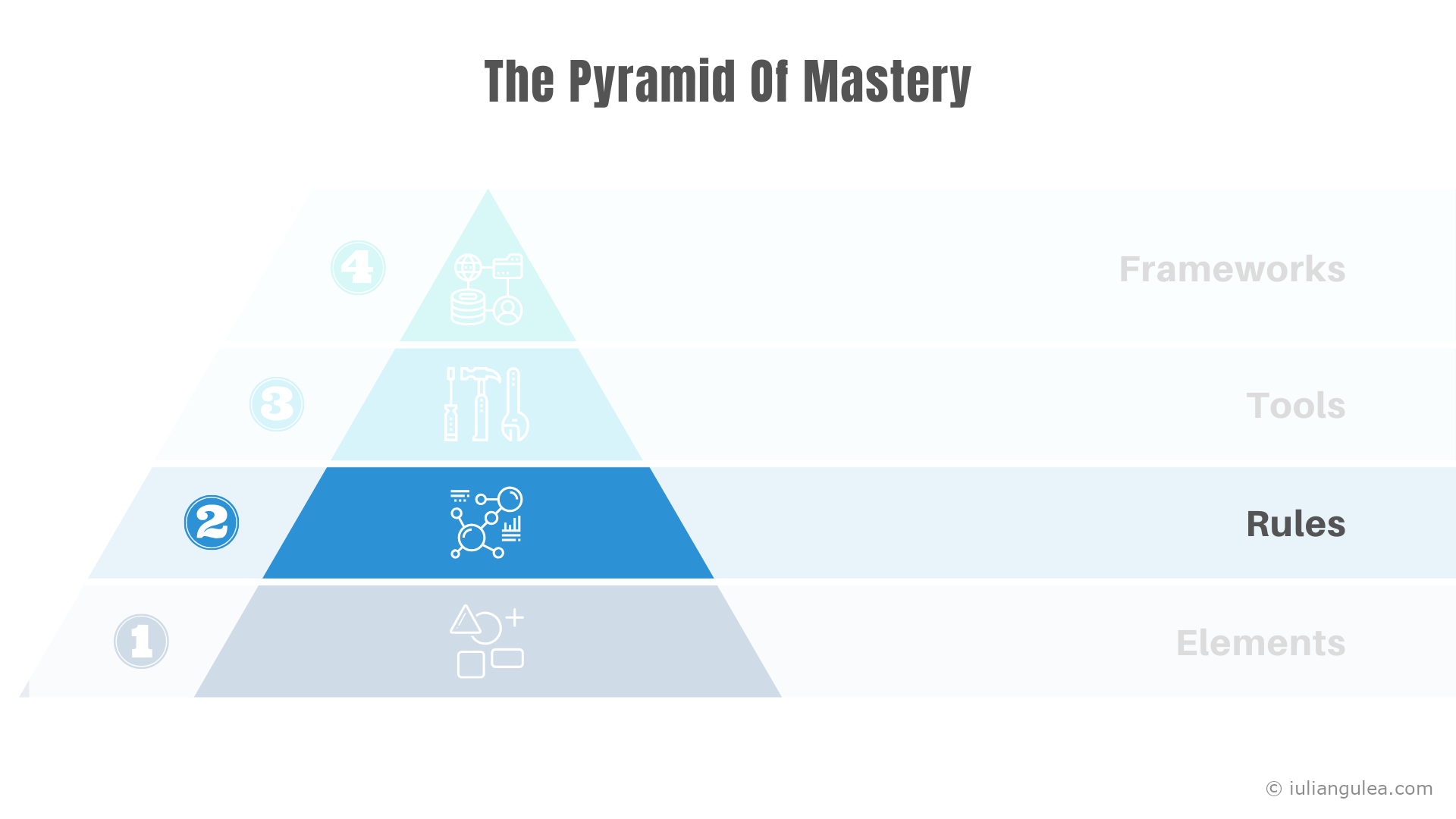
The next layer is the Rules, and it defines all the rules that govern a domain. These include how the Elements interact with each other, what Elements can be combined, and how to couple them as well as the general Rules within the craft—the workflow, the interaction with the actors of the job, etc.
Some Rules that define the interaction of Elements in cooking are:
- How proteins are affected when being fried vs. boiled
- Why some liquids cannot dissolve in each other
- How emulsification works
Speaking about some general rules:
- Keep your knives sharp
- Prep your ingredients in advance
- Storing food
The Rules add up to the already enormous amount of information from the Elements layer.
The Tools
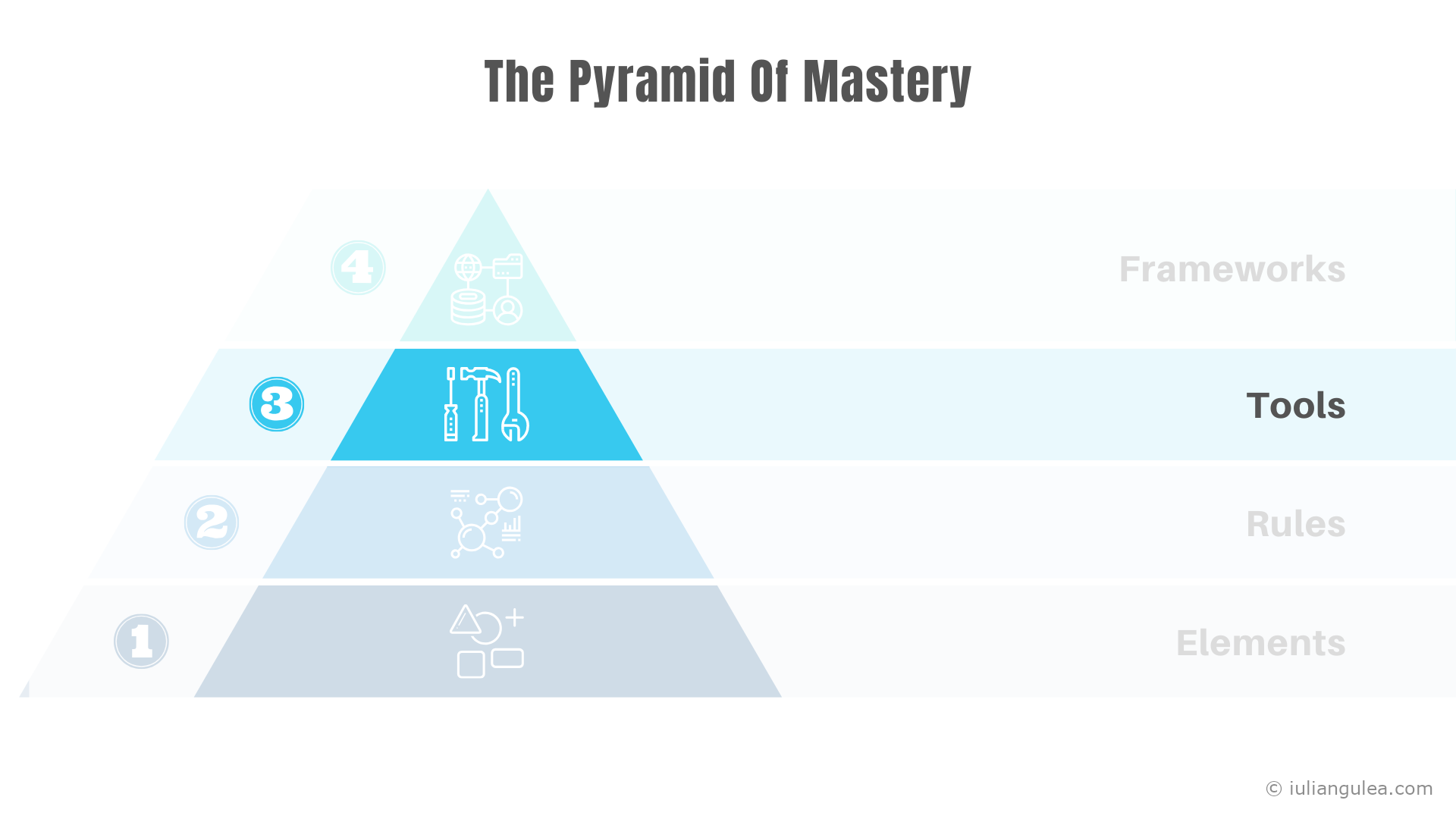
Following the Rules are the Tools, with the name of this layer speaking for itself. This layer defines the instruments you have at your disposal.
For a cook, some instruments are:
- A good knife
- A cutting board
- A blender
- A food processor
- Etc.
Tools can be straightforward (knife, cutting board), reasonably complex (blender), or quite sophisticated (food processor). Whatever the degree of complexity, you should learn the ins and outs of the tools you are going to use. Otherwise, it will take longer to perform a task, and the quality might suffer as well.
I suppose it is tempting, if the only tool you have is a hammer, to treat everything as if it were a nail. —Abraham Maslow, 1966
Know your tools and use them accordingly.
The Frameworks
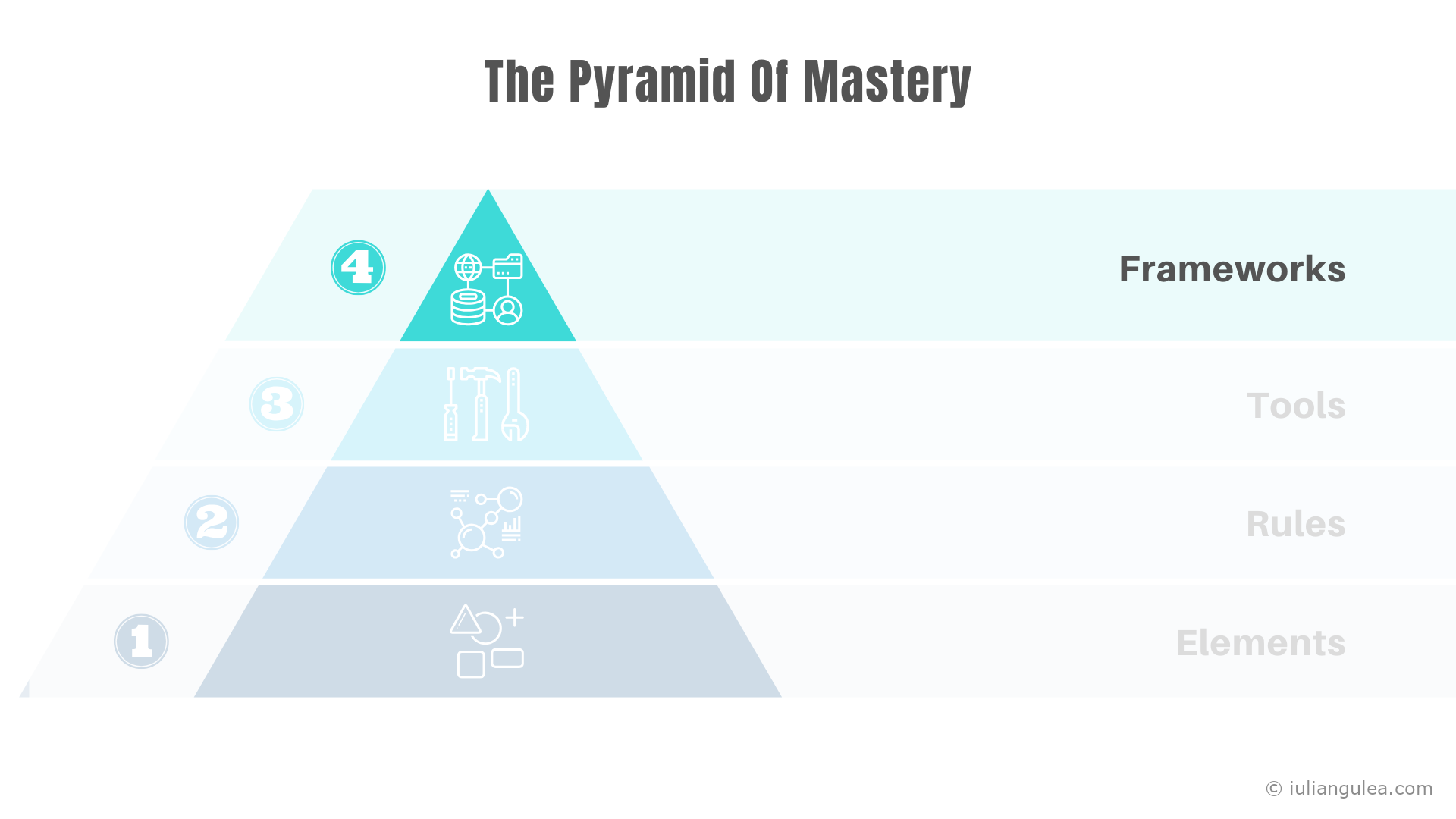
The topmost layer is the Frameworks. A Framework is a system of a subset of Elements, Rules, and Tools that combined allow for a more seamless achievement of a set of goals.
Frameworks are nothing but layers of abstraction that hide the underlying fundamentals behind a friendly facade that is easy to use. They are developed by people who have a specific goal (or set of goals) in mind. Thus, creators of Frameworks wrap the Elements, Rules, and Tools in simple sequential steps that yield the desired result.
Therefore, their most significant advantage is that they can speed up the work and reduce the complexity of a specific task—you don’t have to understand all the details how Elements interact through which Rules as long as you follow the Framework steps and rules.
And that means that their most significant disadvantage is that Frameworks are rigid. If you have a Framework that can do A, B, or C, it is useless if you need to do D.
All those “12 steps to be successful”, “7 ways to get a promotion”, “5 rules of writing” articles found on the internet are nothing but Frameworks—steps that sometimes help you achieve the desired result. When they do help, it’s excellent, but because they oversimplify things, they frequently fail.
In cooking, all recipes are Frameworks—sequential steps you should take to make a dish. You don’t need to understand what ingredients consist of, or how they interact with each other—you simply have to follow the recipe, and you are good to go.
But there is another downside of using a Framework. Have you ever noticed that even if you follow the recipe by the book, the dish still doesn’t come out as intended? That may be quite frustrating.
The reason for that is that since a Framework abstracts some fundamental details, you might miss out on some tiny clues that make all the difference. For instance, when you want to bake some bread and are preparing the dough for it, you might add the exact amount of water, yeast, and flour, but its consistency (which is what truly matters) might be too hard or too soft depending on the quality of the flour. Since the Framework didn’t account for that, your result might differ from those nice-looking images of the cook’s bread. However, if you knew the rules of how the Elements should interact, you could deviate from the recipe and still bake perfect bread. At least theoretically.
There is one thing we didn’t mention yet, but which is an indispensable part of the journey toward Mastery. The idea is that you might understand perfectly well how water interacts with flour and yeast, what reactions happen when mixing the three, and still screw up because you don’t know how the perfect consistency of the dough should be like.
The Missing Side

Orthogonal to all layers is the side of Experience. Experience represents the skills you get through practice. It is present at all four levels, and by its very nature, it is difficult to transfer to someone else by means of writing it down or verbalizing it.
In the baking example above, when you have made bread dozens of times, you will start to understand how the dough should look and what its consistency should be to get a delightful loaf of bread. That’s an example of having experience at the intersection of Elements and Rules layers—you know how the dough should be.
An example of getting experience at the Tools layer is continuous exercise using the tools. The most prominent example is using the knife to cut ingredients—it takes lots of practice to be skillful in using it.
Therefore, having an excellent theoretical understanding (knowing what reactions happen when mixing dough ingredients) without practical experience won’t get you far.
Similarly, having extensive experience with a specific recipe without an understanding of why it works means you cannot deviate even by a bit from it.
These are two sides of the same coin, and they build on each other’s strengths.
The Cyclic Nature Of Learning
Learning is a tremendous subject in itself, but what I’d like to emphasize here is that it is an iterative process—you learn some theory, apply that in real life, analyze the outcome, and then adjust your actions. Rinse and repeat.
I describe this in more detail in How People Learn—The Brain Basics , but as a brief overview of the process, understand that knowing something does not mean you can do something. A simple yet effective exercise that demonstrates this is writing. Take a piece of paper and a pen and write down the following sentence:
I can write fast and beautiful.
Wrote it? Now switch the hands and write the same sentence below. If you are not used to writing with both hands, you did it slowly and ugly, although you know the shape and curvature of the letters you write to perfection.
When you have a solid knowledge of the theory that allows you to understand why things happen the way they do and, on the other hand, you consistently and thoroughly apply that information into practice—you accelerate the learning process and make it more effective.
Choosing Your Area Or Expertise
So far, we didn’t constrain, nor define the sizes of domains of expertise. And they are huge. In cooking, there are 50+ nuts,5 200+ herbs and spices,6 300+ fruits,7 and 250+ vegetables8 that can be used in culinary art (and that’s without counting cereals, flours and many other ingredient types!). Then there are macronutrient chemicals: proteins, lipids (among which are fats, oils, fatty acids, cholesterol, etc.), and carbohydrates (with its sub-types: sugars, starches, fibers) present in all those enumerated goods. Next are acidic and alkali characteristics of ingredients. These are only some of the Elements. Now adding in the Rules: how to combine the Elements, the different cooking techniques (baking, blanching, boiling, braising, stewing, frying, poaching, etc.) each affecting the proteins, lipids, and carbohydrates differently, emulsification, etc. Season all that with the vast diversity of tools used in culinary, and you will get close to what it takes to understand the art of cooking.
Therefore, becoming an expert in everything related to a domain is impossible. You start small, learn the basics and intermediate steps, and then specialize in something particular. That’s why in cooking there are pastry chefs, fish chefs, vegetable chefs, meat chefs, etc. They all can cook everything, and it will be delicious, but if you try a piece of cake from a chef specializing in pastry and another one from a meat chef—you’ll know the difference.
What Does It Take To Become An Expert
You have to put in a lot of effort and perseverance to gain a profound understanding of the basics: the Elements that make up a domain and the Rules by which those Elements interact. But knowing is not enough—you need to apply it to get feedback from your actions. That will help adjust your understanding and will deepen your knowledge of the subject.
The Tools you work with are as essential as the information you operate with. Know what they are capable of, and how to use them properly, and then practice, practice, and practice.
Finally, learn the shortcuts and generalizations—the Frameworks that will allow you to achieve a result faster and easier. Frameworks have incredible potential, but only when you understand why and how they work. When you do not understand that, you will make unintended mistakes that will derail you from the goal you pursue.
All this requires a lot of effort and time. There is a widespread belief that putting in 10,000 hours will make you an expert, but that myth has been proved wrong many times). The precise amount depends a lot on the domain and the person’s existing knowledge and skills, and other factors.
If you want to become an expert in any field, start small. Don’t just cram the basics—strive to understand them. The path is long, and you need to be ready for that. Alongside learning and practicing, there should be a lot of observation and analysis of your actions and the intermediate results.
Once you get hold of some fundamentals, reinforce those skills with some practice. You’ll often find yourself working on the Elements, Rules, and Tools levels in parallel since they are interconnected. Sooner or later, you’ll look into some Frameworks as well. Just make sure you understand the principles they are built on.
Finally, there is no pre-set path toward Mastery. You make your own path. And once you start your journey, there’s perseverance, patience, and lots of practice.
Instead Of Conclusion
Hey there, I’m glad you got this far! It was a long read, and there is still much more to say on this subject.
I wrote how this model applies to the Software Engineering domain in How To Become A Software Engineer Expert. If you are a developer, or are planning to become one, give it a read to see what it takes to become an expert in that field.
If you liked this article, consider subscribing below and following me on twitter (@iuliangulea).Wikipedia - Apprenticeship ↩︎
Association for Talent Development - 2016 State of the Industry Report ↩︎
Institute for the Future in Partnership with Dell Technologies - EMERGING TECHNOLOGIES’ IMPACT ON SOCIETY & WORK IN 2030 ↩︎
Wikipedia - List of culinary nuts ↩︎
Wikipedia - List of culinary herbs and spices ↩︎
Wikipedia - List of culinary fruits ↩︎
Wikipedia - List of vegetables ↩︎